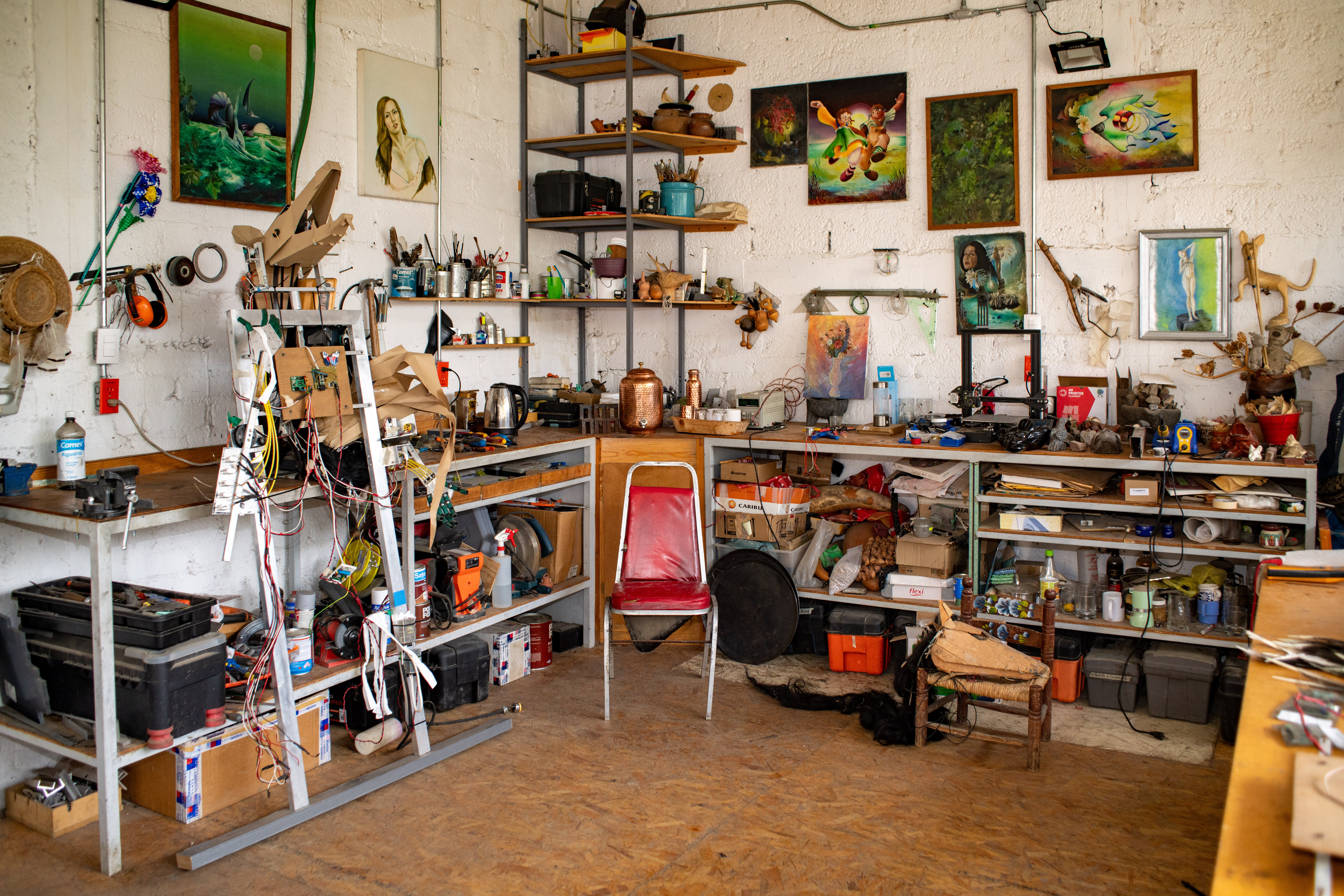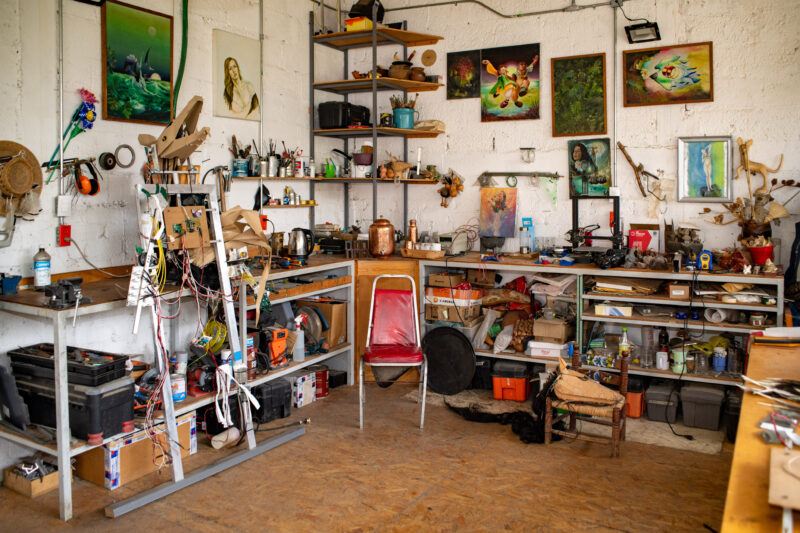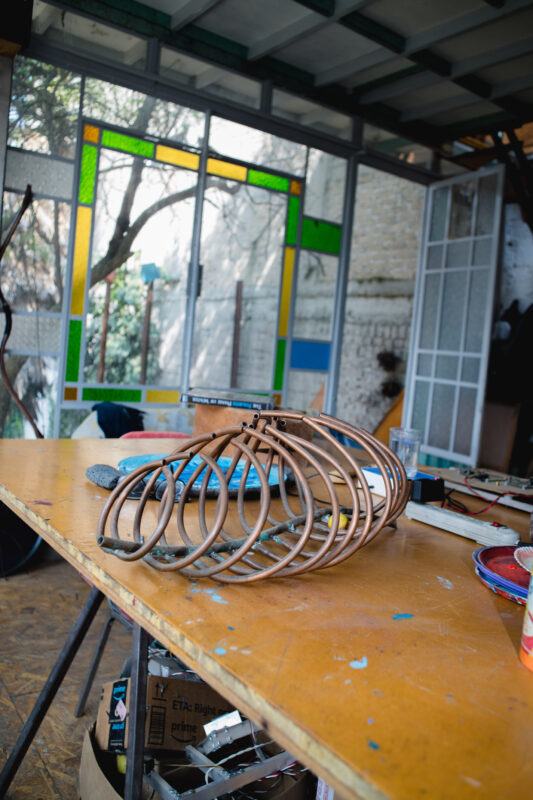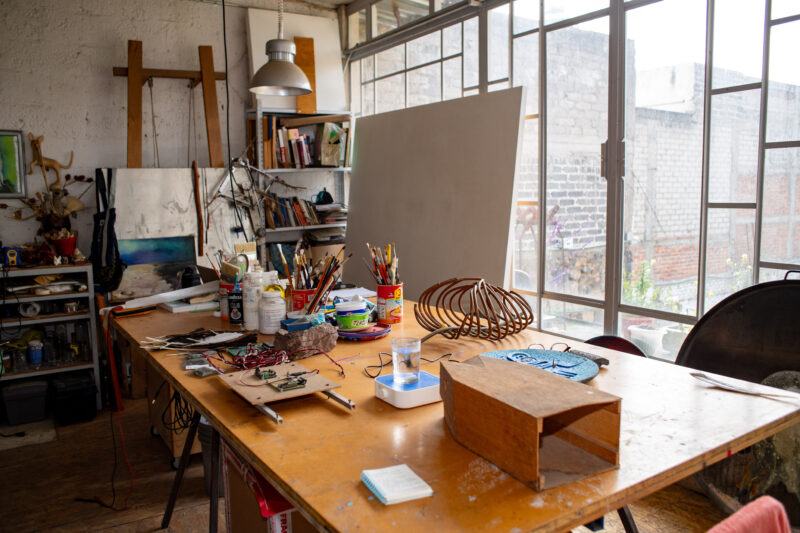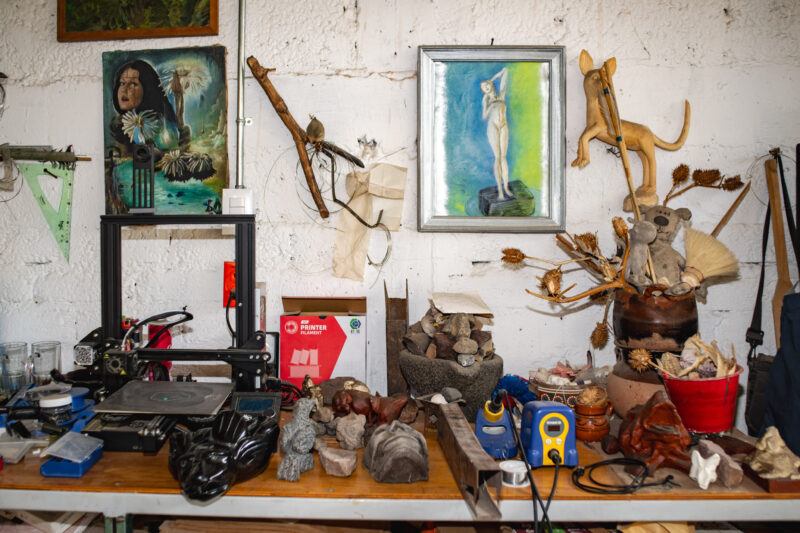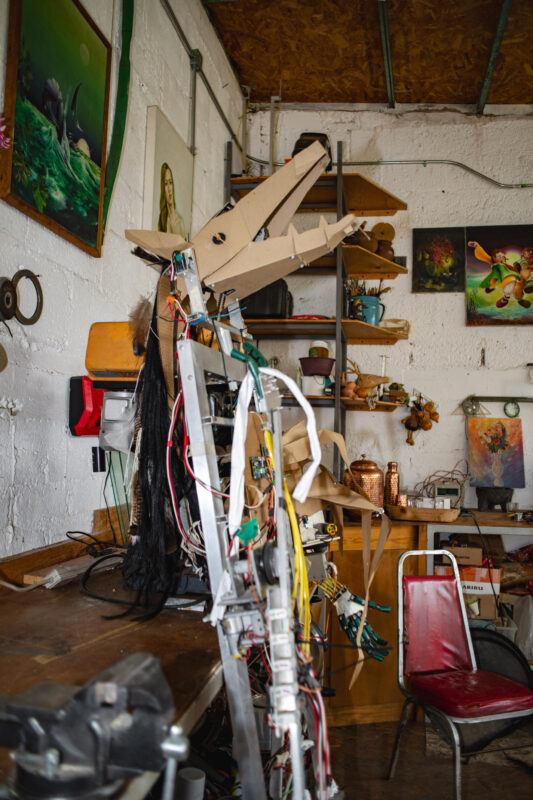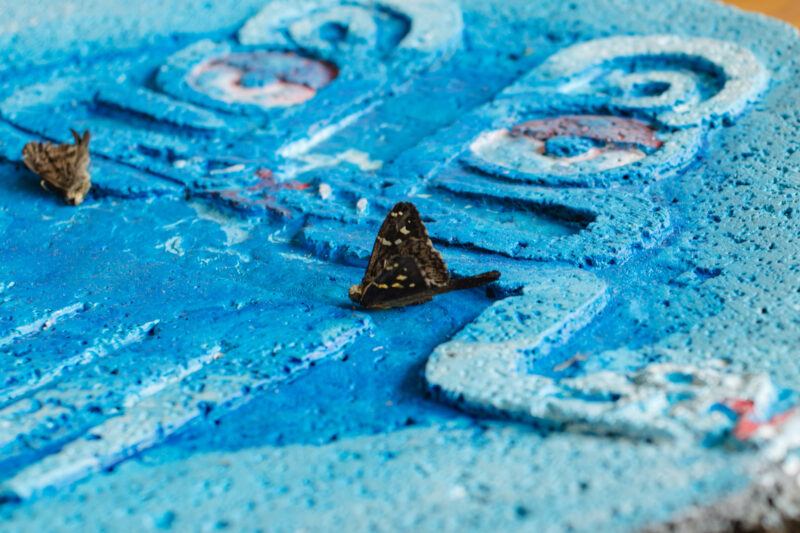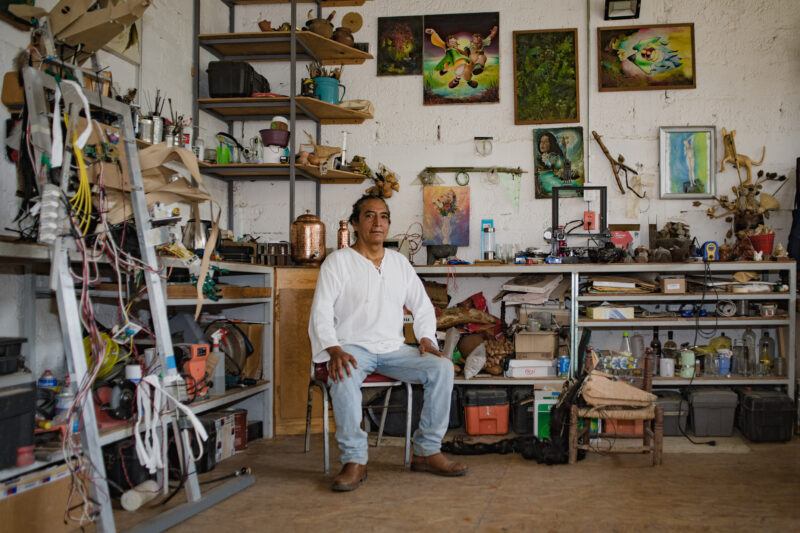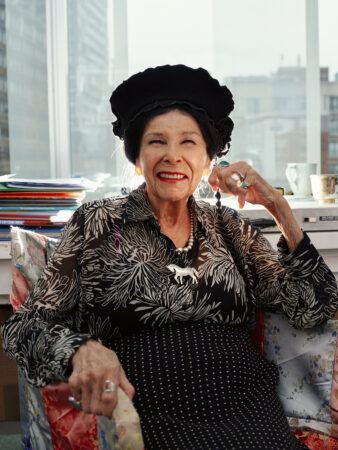Eli Rudavsky—How did you first become an artist? I’d love to hear about your background and what led you here.
Fernando Palma Rodríguez—I never had the intention to be an artist. I was really besotted with German culture and I wanted to travel there to study new technologies. So I got into a technical college where I studied industrial engineering. During my studies, I worked most of the time: I was a full-time student and full-time worker. I was led to believe that engineering was supposed to help make an industry efficient and that the benefits would spread out from the top to the bottom, which of course doesn’t happen and that was a letdown for me. So I decided I was not going to be an engineer after all.
Eventually, I started a two-year post-graduate program at the Rijksakademie in Holland, and that is what I really call my initial time as an artist. By then I had explored many different things—such as working with wood, metal, and even electricity—and I decided that sculpture was the way for me. I was at the Rijksakademie when I started making my first electronic sculptures. My colleagues used to be rather pissed off with me because they used to say, “Well, man, you are an artist—why are you making machines?”
ER—How do you describe your sculptures?
FPR—I make precarious machines. They’re not extraordinary in any sense of technological knowledge. They are very basic, I don’t even call them robots, I mostly call them characters. I’ve read a lot about the histories and stories of American Indians and realized that a lot of knowledge was passed on to kids through stories—not just moral knowledge but also very important lessons about cosmogony.
I think stories ought to be understood not just as things that we decide to put in front of an audience or share with somebody, but as actual characters in their own right. Stories are indeed alive, they have their own volition, and they surface when the listener is able to engage with the teller. For that reason, with the characters I make, I prefer to have several of them interacting with each other and interacting with the public so that visitors trigger certain characters through sensors. In this way, visitors engage with the character and then move on to another one. It’s like when you go out into the street and you bump into somebody that you know, and you bump into strangers, and so on. That’s the effect I like to create.
I try to see the things that we ordinarily call objects as personas. In the West, the moment we define or objectify something, like an apple or a screw, we are voiding it of all of its history and it is subject to be bought and sold. That’s how we have arrived at consumerism. What would be the use of talking to such things? This is when I think of archeologists. If objects didn’t speak to us, archeologists would not be digging for little bits and pieces that are obviously broken tales of another time.
If we define things—a tree, an airplane, a house, a table—as people or personas, then we will treat them the way we treat people. You cannot approach anyone and start insulting them—you’re going to get punched. So you develop a different relational liaison with the world. Obviously, this happens with animals, trees, and plants, but the same relationship ought to extend to the rest of the world. These are the conditions that I like to express in the things that I do, and for that reason, I keep on using ordinary objects such as wood spoons, masks, and cardboard.
ER—Can you tell me more about how you use electronics in your work, and how you think about technology more broadly?
FPR—I consider electronics to be the way that we describe the world today. Concepts like nature and beauty that came from the Renaissance are completely irrelevant today, they’ve become obsolete. To refer to woodlands as nature, for example, is totally stupid because most of the things that we know about the natural world are through the electronic world.
I think that what is happening to us is what happened to the Romans. When the Romans distributed water through lead pipes they were poisoning everybody, but they didn’t know it. I think we are doing the same with the electronic world: we have created a nest of infinite vibrations and energies that are scattered around the world every day, 24 hours a day, to the point that we never really have a rest from it. What is happening to us is very hard to see, but in my practice, I think that the electronic world is an unknown jungle that we have the desire to investigate, but we don’t know where to begin.
I learned during my years studying electronics that if a doctor in electronics knew how even 3% of the electronic world worked, he would be a genius. When the transistor was invented in 1947, it was the size of a golf ball. Today, every tablet and every smartphone has the likes of 15 billion transistors inside of it. So we don’t know what’s inside. Nobody knows how it’s put together. It means that when we come to ideas such as democracy, of course it doesn’t mean anything, because if you don’t know your environment, how can you make a proposal of what to do with it? I think today we have pretty much lost where we are going, what we are doing, and what we are doing it for. They say that the rich buy knowledge and skills and the poor buy entertainment, and it is very much like that. Electronics have blinded us not only in terms of knowledge, but also in terms of our own senses.
ER—What lessons have you learned through your art practice about how we might respond to the rapid advancement of technology and to all of the problems it has created in our society?
FPR—What I make now does not come out of romantic views of the past. Around 30 years ago, I thought that Indigenous cultures would eventually come back again but I don’t have that idea or feeling anymore. But, I think indigenous culture is an interesting domain, especially when you study natural cycles. From the 30 years I spent in the UK and Europe, I developed a good idea of how the West thinks and today it is evident that that thinking won’t pull us out of where we are going. The unfortunate thing is that most of the world now has become Westernized.
The way we perceive time and space is conditioned by our own studies, and it’s very hard for us to step out of the linear condition of life and time, despite a lot of contemporary literature about the quantum understanding of space and time. I used to believe that people would not have the resources to create a different world because I thought in linear terms.
Our perception of time should change: if we understand time cyclically, I think we understand the ability to pull out of very stressful situations. To me, electronics have helped me in that particular sense. When you study electronics, you are studying how sinusoidal waves function, where they come from, and how you can manipulate them. Sinusoidal waves come from generating electricity in an alternating way, passing north, south, north, south. When you create a wave pattern that has a particular frequency [the number of waves that pass through a point in a certain period of time], the period can be one millisecond, one second, one year, or any amount of time. When we consume the world through a Western lens, that period is very short. Indigenous society has a period that spans longer periods of time.
Nahuatl is an agglutinative language: the speaker makes up words as if they were making collages, and thus they create new concepts. So when you put together electronics with effigies from the past, you are making a dialogue between the two. When I work with young engineers, I say to them, “Help me to program this arm,” and they say something like, “How many times? What speed do you need to move it by?” going immediately to engineering data. I just say, “No, no, no, don’t concern yourself with that. Just make it move like if you are declaring your love to a girl, or if you are saying, ‘I love you’ to your mother. How are you going to move the hand? How are you going to express yourself? I want you to express that.” And they just look at me like, “What is this guy about,” you know? Little by little, they think of electronics in a very different way. Very many of these young engineers have even said, “I want to be an artist, I really want to be an artist.”

